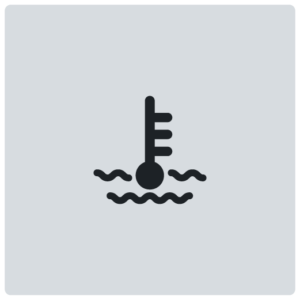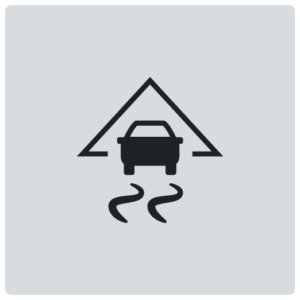Dash lights don’t shine to brighten up your day or to celebrate the start of the festivities They’ve got a much more important job – to alert you that there’s something wrong with your car. Illuminating dash lights could indicate a symptom of something serious like a head gasket failure or, a minor issue like a broken sensor. Whatever needs fixing as soon as possible – even more so before taking the open road for a long-awaited and well-deserved holiday or road trip 😊.
Before you can treat the symptoms, you need to source the cause. That’s why you must know what your dash lights signal.
The dash light diagnoses
- ‘Heart’ failure

Your engine’s ‘heart’ (battery) is failing, which means that it needs to be charged. It’s normal to see this dash light when you start your car’s engine, but if it doesn’t disappear after a few seconds, there could be a problem with the battery.
How to fix it:
Charge your battery or replace it.
2. ‘Stomach’ pains

There’s a problem with your car’s ‘stomach’ (engine). The issue can be minor – like a sensor cable replacement – but could also be a larger and more costly problem. Don’t ignore the light as this could lead to irreparable damage.
How to fix it:
Go to your nearest trusted mechanic for repairs.
3. ‘Dehydration’

Your car is dehydrated if this dash light appears. This might happen when oil temperatures get too high or oil levels and pressure drop too low. When your car’s hydration is compromised or completely lost, it could lead to ‘organ’ (engine) damage.
How to fix it:
Give your 4-wheel bae some juice to quench her first. Make sure that you use the right oil for a top-up.
4. ‘Fever’

This is a sign of severe fever, which means that your engine could be overheating – as a result of a gasket failure (major problem) or a minor issue like a leak somewhere in the system.
How to fix it:
Check the coolant levels in the coolant tank and top up if necessary. The radiator cap and operation of the fan should also be checked when you see this light.
5.'Deflated lungs’

When you see this light, it’s not a very good sign as your airbags might be deflated or a sensor might be broken, which means that they can’t protect you should there be an accident.
How to fix it:
Take your car to the dealership’s service centre for proper diagnoses and repair.
6. Stiff ‘joints

Your steering wheel’s ‘joints’ (power steering) might be experiencing a bit of ‘arthritis’. This means that driving becomes dangerous as it’s difficult to turn the steering wheel and to change your car’s direction. At a slow speed, this is mildly annoying but when you’re on the highway or trying to change lanes to avoid something in the road, it’s very dangerous.
How to fix it:
Head over to the service centre for repairs.
7. ‘Dizzy’ and ‘drowsy’

This light will usually switch on when the road is slippery – it indicates that the electronic stability system is in use. This means that your car needs a little extra help to keep it stable.
How to fix it:
Just drive with caution and wait for better road conditions.
Now that you know which illuminated signs you must look out for on your car’s dash panel, remember also to have your car regularly serviced to avoid the dash lights from popping up at unplanned and inconvenient times when your cash flow may be low.
If you want to save on expensive bills from mechanics and car body repair shops in the event of an accident, make sure that your car is insured with dotsure.co.za. Did you know that we also offer a top of the range Mechanical Warranty product? Get a quote in less than 5 minutes right now!
*Always consult a professional mechanic for a full and proper evaluation of your car’s specific needs.
Other interesting reads:
What should you do with those deflated tyres?
Check out these car cleaning tips to maintain your car’s resale value.



